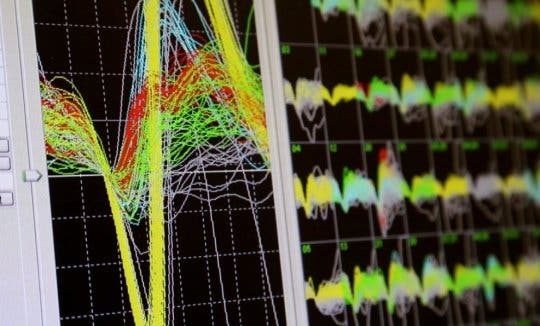‘Working in sync’ with a partner isn’t just a figure of speech. When one monkey observes another performing a task, motor neurons in the observer’s brain mimic the activity of the other animal. New research comes to show what effects social dynamics have on this brain synchronicity.

Image credits Shawn Rocco / Duke Health.
Your brain, being the socially-savvy pound of grey mush that it is, comes equipped with set of neurons called mirror (or cubelli) neurons. Their exact function and purpose remain largely unknown, but based on their function, it seems that at least part of their purpose is to be the grease in social interactions: mirror neurons fire both when an animal acts and when it observes the same action performed by another.
Because of the social component of their activity, it’s also likely that deficiencies in these cells have a hand to play in disorders that affect social skills, such as those on the autism spectrum. Getting a better idea of what makes these cells tick, what makes them go awry, and potential ways to fix them could then have a positive impact on the life quality of many people around the world.
Monkey see, neurons fire
Previous research has shown that when an animal watches another performing a motor task — reaching for food, for example — mirror neurons in the observer’s motor cortex start firing. More interestingly, their activity is the same it would be if the observer was actually reaching for food himself. New research from the Duke University Medical Center suggests that mirroring (at least in monkeys) is also influenced by social factors, including proximity to other individuals, social hierarchy, and competition for food.
When pairs of monkeys interacted during a social task, their brains showed episodes of high synchronization, the team reports. This phenomenon, known as interbrain cortical synchronization (ICS), saw groups of neurons in each animal’s motor cortex fire the same time as the others’.
“We believe our study has the potential to open a complete new field of investigation in modern neuroscience by demonstrating that even the simplest functions of the motor cortex, such as creating body movements, are heavily influenced by the type of social relationships among the animals participating,” said senior author Miguel Nicolelis, M.D., Ph.D.
The findings highlight the importance context plays in brain research. Previously, neuroscientists recorded brain activity in one subject at a time; according to Nicolelis, the Duke research was the first to create and use a multi-channel, wireless system that could record brain activity in two monkeys at the same time, while they interacted in the same space.
During one of the tasks, one monkey (called the passenger) sat in an electronic wheelchair programmed to reach across the room towards a fresh grape. The second monkey (the observer) was placed in the same room and watched the passenger on its trek. Both their brains were monitored and their activity recorded during this time.
As the passenger traveled across the room, groups of neurons in the two animals’ motor neurons periodically synchronized. Surprisingly, the team reports that these episodes of ICS could be used to predict both the location of the passenger, as well as its velocity. Brain activity readings could also be used to predict how close the two animals were at any point, and the passenger’s proximity to the reward, they add.
The most powerful argument in favor of the link between ICS and social factors was that ICS intensity could be used to predict the social dynamic between the two animals, according to the researchers. On the tasks in which the dominant monkey was the passenger, and a lower-ranking individual was the observer, ICS intensity steadily grew as the two came closer together. It peaked as the animals were about three feet apart, which is about close enough for physical interaction — be that grooming or fighting.
On the other hand, when the roles were reversed (i.e. the dominant monkey was observing), ICS intensity didn’t increase as the monkeys got closer to each other — suggesting social rank plays a role in brain synchronization.
The team believes the observed ICS stems from simultaneous activation of mirror neurons in the brains of the observer and the passenger. Similar processes may unfold in the brains of humans during social interactions, they propose. The results could open up a new path of diagnostic and treatment options for conditions where this mirroring doesn’t follow typical patterns.
For now, the research is limited because human brains may still hide quirks and unique patterns of synchronicity. However, measuring ICS in humans could reveal more insight into how groups cooperate and coordinate, and potential types of training to improve synchrony and teamwork.
“Using a non-invasive version of this approach, we may be able to quantify how well professional athletes, musicians or dancers are working together, or if an audience is engaged in what they’re seeing, listening or imagining,” Nicolelis said.
“This could be valuable for any social task that requires the synchronization of many individuals to improve social cohesion.”
The paper “Interbrain cortical synchronization encodes multiple aspects of social interactions in monkey pairs” has been published in the journal Scientific Reports.


